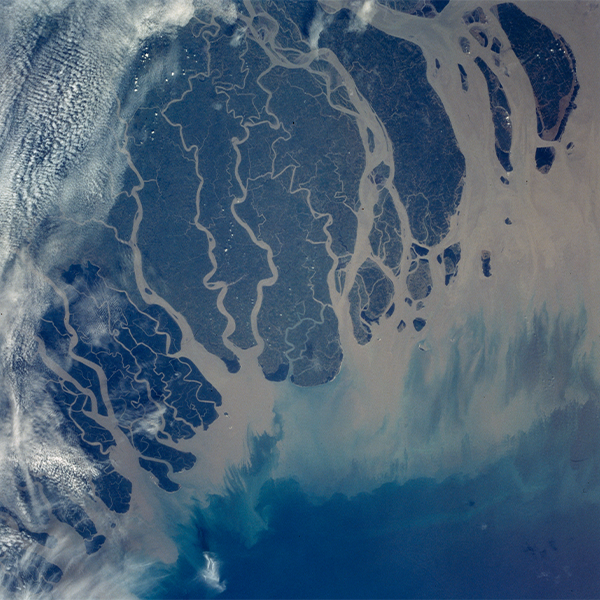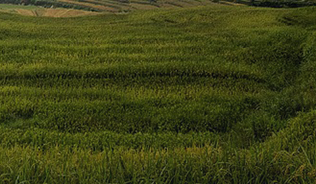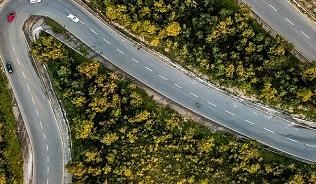environmental SCIENTIST | Reframing and responding to natural disasters | December 2019
Kimberley Thomas challenges over-simplified approaches that frame climate change as the only relevant stressor on socio-ecological systems.
Sea-level rise is going to displace millions of people in Bangladesh, a senior security analyst announced matter-of-factly to our group gathered in a small Washington, DC conference room in November 2019. It is, in this moment of heightened climate literacy, a well-worn refrain. However, it obscures a much more complex set of dynamics – one that is not amenable to pithy talking points or tidy policy recommendations.
Commentators hailing from corners as disparate as policy think-tanks, mass-media outlets, academic institutions and government agencies have, despite their many differences, converged on the idea that large river deltas are doomed. This expectation rests on an intuitive logic: coastal deltas such as those in Bangladesh and Vietnam are densely populated, low lying and braided with tidally influenced rivers. Cyclonic storms can quickly erode and redistribute enormous quantities of sediment along the coasts, destroying property and dislocating millions of people in the process. During the dry season, the Ganges–Brahmaputra and Mekong deltas also suffer from seawater intrusion, which is magnified when spring high tides coincide with droughts.
So there appear to be vanishingly few options for such regions in the face of rising sea levels. Indeed, responses tend to take one of three forms: shifting cultivation from rice agriculture to brackish shrimp aquaculture; hardening the landscape through engineered infrastructure; or relocating out of the coastal zone. Delta dynamics, however, assume a very different form when approached from a historical perspective. From this point of view, prevailing responses to climate-change hazards look more like sources of risk than wellsprings of pragmatism.
’Climate change as a 'master concept'
The received wisdom that human settlements in low-lying coastal areas are condemned to disappear under climate change exemplifies what geographer Mike Hulme describes as a determinist fallacy. Perhaps the most familiar of these is climate determinism, which elevates climate to ‘a – if not the – universal predictor (and cause) of individual physiology and psychology and of collective social organization and behavior’.1 Although this mode of thought has been roundly rejected for nearly a century, some geographers and casual observers continue to succumb to its allure.
However, while muted versions of traditional climate determinism still circulate, a more recent, and decidedly more strident, iteration has taken shape under the guise of climate reductionism.
Climate reductionism is characterised by simplifying complex systems such that climate is given primacy as the only or most relevant explanatory variable for understanding system behaviour and response. Thus, reductive approaches emphasise climate to the exclusion of a host of other factors that influence socio-ecological change. In large part due to the wide circulation of Intergovernmental Panel on Climate Change (IPCC) reports and heightened media coverage of the topic, climate change has become the ‘master concept’ for analysing and addressing global environmental change. Alertness to the phenomenon of climate reductionism becomes helpful for interpreting statements such as the one that opens this article. It invites us to consider whether sea-level rise is really the sole, or even the most important, factor driving demographic and environmental change in mega-deltas such as those in Bangladesh and Vietnam.
 |
| Figure 1. The Ganges-Brahmaputra River delta, the largest in the world, covering parts of Bangladesh and India. (©NASA) |
Water Hazards by any other name
The Ganges–Brahmaputra and Mekong deltas are two of the most densely populated regions in the world for good reasons. These river networks convey hundreds of millions of tonnes of sediment along their channels each year, which provide the substrate for highly productive agricultural systems centred on rice cultivation. The rivers are also habitats for diverse aquatic biota that support large, inland fisheries. Rivers make convenient thoroughfares, and large sections of these deltas are served primarily by boat rather than road traffic.
These salubrious features notwithstanding, mega-deltas also face a suite of challenges. Extreme flooding and tropical storms recur with catastrophic impacts, including fatalities, increased disease transmission, crop loss, property damage and associated disruptions to education and livelihoods. Mainstream narratives of water hazards in these deltaic environments stop there. Uncritical audiences thus perceive Bangladesh and Vietnam to be helpless in the face of the inexorable advance of climate change, with sea-level rise being the most conspicuous spectre of them all.
But people living in these environments have not been passive. In Vietnam, the introduction of high dikes in the upper Mekong Delta from the 1970s to 1990s revolutionised floodwater management by not only protecting rice fields but also enabling the transition from single cropping to double and triple cropping. As a result, the Mekong Delta reliably produces an agricultural surplus that constitutes 90 per cent of Vietnam’s rice exports. In Bangladesh, the construction in the 1960s and 1970s of circular embankments called polders likewise protected people and property from devastating floods and storms. These structures, in conjunction with high-yield rice varieties and other Green Revolution inputs, enabled the country to become food self-sufficient soon after their introduction. However, the Mekong and Ganges–Brahmaputra deltas did not completely get rid of water hazard risks, nor do they exist in isolation of wider dynamics of development and global trade. These factors become central to understanding the relative impact of climate change on these complex socio-ecological systems.
Over time, the early successes that water-management schemes generated in the two countries eventually led to widespread problems. The high dikes in the upper Mekong delta deflected flood risk onto unprotected and downstream localities. The polder system in coastal Bangladesh disrupted sediment flows that in turn decimated fish populations, increased risk of inundation and blocked navigation routes. In both countries, groundwater pumping, sand mining for construction, and other activities are driving land subsidence at rates that exceed that of sea-level rise. Upstream water diversions and hydropower development likewise starve deltas of the flows that counteract seawater intrusion and coastal erosion.
Resituating climate changer
One must tread a fine line when challenging climate reductionism. At first it can sound as if situating hazards within a broader political economic and geographical frame is tantamount to disavowing the profound crisis that climate change represents. The intention here is quite the opposite. If we are to take seriously the grave risks of seawater intrusion, flooding, drought and erosion to two of the world’s largest deltas, then it bears focusing on their root causes, including climate-change and non-climate change related factors.
Climate reductionism is apparent in government land-use policies that either surrender these deltas to sea-level rise, or attempt to fortify them against the encroaching ocean. The former entails large-scale transformation of the coastal zone to brackish-water shrimp production, which is both environmentally and socially deleterious. While shrimp aquaculture makes economic sense, financial gains come at the cost of soil and groundwater salinisation that denude landscapes of vegetation and impair human health. The low labour inputs needed for shrimp production also translate into significant reductions in employment opportunities, particularly for poor and landless households. Conversely, attempts to protect land and freshwater from sea-level rise entail more of the same hard infrastructural measures (embankments, sluice gates, sea walls, etc.) that perpetuate existing hazards along the lines described above.
Proponents of these contradictory approaches typically frame them as facilitating adaptation or resilience. However, in making their argument for considering stressors beyond climate change, Sharachchandra Lele and colleagues point out that:
Both concepts [adaptation and resilience], if taken at face value, assume that the condition prior to the predicted change or unpredicted shock was acceptable or desirable. In the context of water, this means assuming that ‘these regional ecosystems and human activities are usually reasonably well adapted to the current climate conditions, but may be vulnerable to large or rapid changes’.3
The example from Vietnam and Bangladesh challenge such assumptions, indicating instead that mega-deltas are dynamic and unstable configurations of land-use practices and infrastructures that already generate a host of environmental vulnerabilities for residents. It behoves us to address climate-change impacts alongside these land-use practices and infrastructures, not without them.
Kimberley Thomas, Assistant professor in the Department of Geography and Urban Studies at Temple University. Her research focuses on the socio-political drivers of environmental change at multiple scales to understand how human vulnerability and land-use decisions co-constitute one another. For details and access to research articles
1. Hulme, M. (2011) Reducing the future to climate: A story of climate determinism and reductionism. Osiris, 26(1), pp.245–266.
2. Lele, S., Srinivasan, V., Thomas, B.K. and Jamwal, P. (2018) Adapting to climate change in rapidly urbanizing river basins: insights from a multiple-concerns, multiple-stressors, and multi-level approach. Water International, 43(2), pp.281–304. http://doi.org/10.1080/02508060.2017.1416442
3. Nijssen, B., O’Donnell, G. M., Hamlet, A.F. and Lettenmaier, D.P. (2001) Hydrologic sensitivity of global rivers to climate change. Climatic Change, 50(1–2), pp.143–175. doi: 10.1023/A:1010616428763





